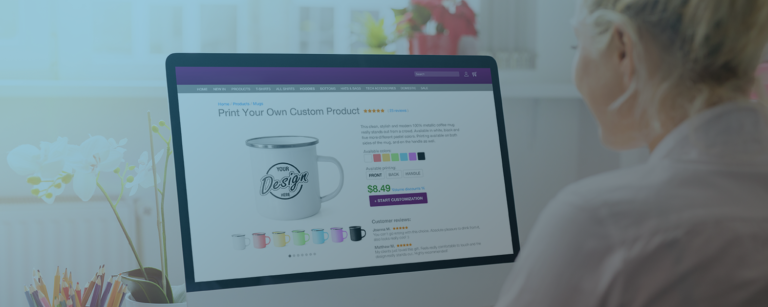Looking to reduce return rate in your online shop? You’re not alone. With e-commerce return rates averaging between 20-30%, finding effective strategies to minimize returns while maintaining customer satisfaction is crucial for your bottom line. This comprehensive guide explores 7 proven tactics that can significantly reduce return rates and boost your profitability.
Table of Contents
- Why a High Return Rate is Problematic
- Strategy 1: Clear and Detailed Product Information
- Strategy 2: Size Charts and Consultation Tools
- Strategy 3: Effective Customer Communication
- Strategy 4: Quality Control and Product Optimization
- Strategy 5: Shipping Optimization
- Strategy 6: Data-Driven Return Analysis
- Strategy 7: Customer Loyalty Programs
- Conclusion: Successfully Reducing Your Return Rate
Why a High Return Rate is Problematic
Returns are an inevitable part of e-commerce, but a high return rate quickly becomes problematic for multiple reasons. Not only do returns generate additional costs—approximately $101 billion annually in the US alone—but they also increase administrative workload and burden customer service teams. Furthermore, excessive returns often indicate customer dissatisfaction, which negatively impacts loyalty and lifetime value.
According to recent industry data, processing a single return costs retailers an average of $10-$20, not including the cost of return shipping. With these figures in mind, implementing strategies to reduce return rates becomes essential for maintaining profitability while ensuring customer satisfaction.
Strategy 1: Prevent Returns Through Clear and Detailed Product Information
One of the most effective ways to reduce return rate is addressing its most common cause: misaligned customer expectations. These typically arise from insufficient or misleading product information. Making your product details as comprehensive and accurate as possible is crucial.
1. High-Quality Product Images
In e-commerce, visuals speak volumes. Implement these image best practices to reduce returns:
- Use high-resolution photos showing products from multiple angles (front, back, sides)
- Include zoom functionality for examining details
- Provide 360-degree views when possible
- Show the product being used in real-life contexts
- Display all available color variations with accurate color representation
2. Comprehensive Product Descriptions
Thorough product descriptions are essential to reduce return rates caused by information gaps. Ensure your descriptions include:
- Detailed specifications (dimensions, weight, materials, features)
- Care and maintenance instructions
- Compatibility information (where applicable)
- Common use cases and limitations
- Answers to frequently asked questions
Remember: providing too much information is better than not enough when working to reduce product returns.
3. Include Customer Reviews and Photos
Authentic customer feedback provides social proof and sets realistic expectations:
- Actively encourage customers to leave reviews after purchase
- Incentivize the sharing of customer photos showing the product in use
- Implement a Q&A section where prospective buyers can ask previous purchasers questions
- Highlight the most helpful reviews that accurately describe product attributes
Research shows that products with user-generated photos experience a return rate up to 20% lower than those without.
Strategy 2: Provide Size Charts and Consultation Tools
Especially in fashion and apparel, fit issues account for over 70% of returns. Implementing comprehensive sizing tools can significantly reduce return rates in these categories.
1. Precise Size Charts
Effective size charts should:
- Include detailed measurements for all key dimensions
- Provide visual guides showing exactly where/how to measure
- Include conversion tables for international sizing systems
- Offer recommendations based on body type or fit preference (relaxed, slim, etc.)
2. Virtual Try-On and Fit Tools
Technology has revolutionized how customers can evaluate fit before purchasing:
- Augmented reality (AR) try-on tools for clothing, accessories, and cosmetics
- AI-powered size recommendation engines that compare customer measurements with product dimensions
- Virtual models that represent different body types
- „Fit predictor“ tools that leverage previous purchase data
E-commerce businesses implementing these technologies report return rate reductions of 15-40%, making them a worthwhile investment despite initial setup costs.
Strategy 3: Effective Communication with Your Customers
How you communicate with customers before, during, and after purchase significantly impacts your return rate. Clear, proactive communication can prevent unnecessary returns.
1. Confirmation Emails with Additional Information
Optimize your post-purchase emails to reduce returns:
- Include product-specific usage tips and best practices
- Provide links to setup guides, manuals, or tutorial videos
- Set realistic delivery expectations with tracking information
- Offer pre-emptive troubleshooting for common issues
2. Support with Product Selection
Guiding customers toward the right purchase decisions helps reduce return rates:
- Implement live chat support with product specialists
- Offer video consultations for complex or high-value products
- Create detailed buying guides for different product categories
- Use AI-powered product recommendation engines
3. Transparent Return Policies
Counter-intuitively, clear return policies can actually help reduce return rates:
- Communicate policies in simple, easy-to-understand language
- Make return instructions readily accessible
- Consider flexible policies that build trust (research shows flexible policies can reduce returns by increasing purchase confidence)
- Set reasonable timeframes that discourage „wardrobing“ (buying with the intention to return after use)
Strategy 4: Quality Control and Product Optimization
Product quality issues drive approximately 20% of returns. Implementing rigorous quality measures is essential to reduce return rates long-term.
1. Regular Quality Checks
Establish a comprehensive quality control system:
- Implement systematic inspection processes for incoming inventory
- Set clear quality standards for suppliers with penalties for non-compliance
- Conduct random sampling tests before fulfillment
- Prioritize checks for products with historically high return rates
2. Use Customer Feedback for Product Improvement
Customer returns provide valuable data for product optimization:
- Analyze return reasons systematically to identify patterns
- Establish feedback loops between customer service and product development teams
- Prioritize improvements for items with the highest return rates
- Conduct focus groups or surveys with customers who have returned products
Strategy 5: Optimization of Shipping
Shipping-related damages account for approximately 10% of all returns. Optimizing your logistics can significantly reduce your return rate.
1. Secure and Sustainable Packaging
Effective packaging serves multiple purposes:
- Protects products during transit with appropriate cushioning and support
- Minimizes environmental impact through recyclable or biodegradable materials
- Enhances unboxing experience, increasing perceived value
- Uses right-sized packaging to prevent movement during shipping
Research indicates that sustainable packaging not only reduces damages but also increases customer satisfaction by 17%, further helping to reduce return rates.
2. Reliable Logistics Partners
The quality of your shipping partners directly impacts your return rate:
- Select carriers with proven track records for careful handling
- Consider shipping insurance for high-value items
- Evaluate carrier performance with regular reviews
- Implement shipping SLAs (Service Level Agreements) with clear performance metrics
Strategy 6: Data-Driven Return Analysis
Advanced analytics can uncover hidden patterns driving returns and provide actionable insights to reduce return rates:
- Implement detailed return reason codes and tracking
- Analyze returns by product category, manufacturer, price point, and customer segment
- Identify „serial returners“ and develop targeted strategies
- Create dashboards with key return metrics for continuous monitoring
- Use predictive analytics to forecast high-risk orders before fulfillment
Companies implementing advanced return analytics report reducing return rates by an average of 12-18% within the first year.
Strategy 7: Customer Loyalty Programs
Loyal customers typically have lower return rates—up to 50% less than new customers. Implementing loyalty initiatives can significantly impact your overall returns:
- Develop tiered loyalty programs that reward repeat purchases
- Provide enhanced pre-purchase support for loyal customers
- Offer exclusive access to detailed product information and sizing guides
- Create special return policies for VIP customers that encourage responsible return behavior
The dual benefit: not only do you reduce return rates, but you also increase customer lifetime value and profitability.
Conclusion: Successfully Reducing Your Return Rate
Reducing your e-commerce return rate requires a multi-faceted approach addressing the entire customer journey. By implementing the seven strategies outlined in this guide—from improving product information to optimizing shipping and leveraging customer loyalty—you can significantly reduce returns while maintaining or even enhancing customer satisfaction.
Remember that reducing return rates is an ongoing process that requires regular assessment and refinement. Start by identifying your biggest return drivers and implementing the most relevant strategies for your specific business model. Track your progress with key metrics, and continue optimizing your approach based on the results.
By making return reduction a strategic priority, you’ll not only improve profitability but also create a more sustainable business model and superior customer experience.
What strategies have you implemented to reduce return rates in your e-commerce business? Share your experiences in the comments below!






